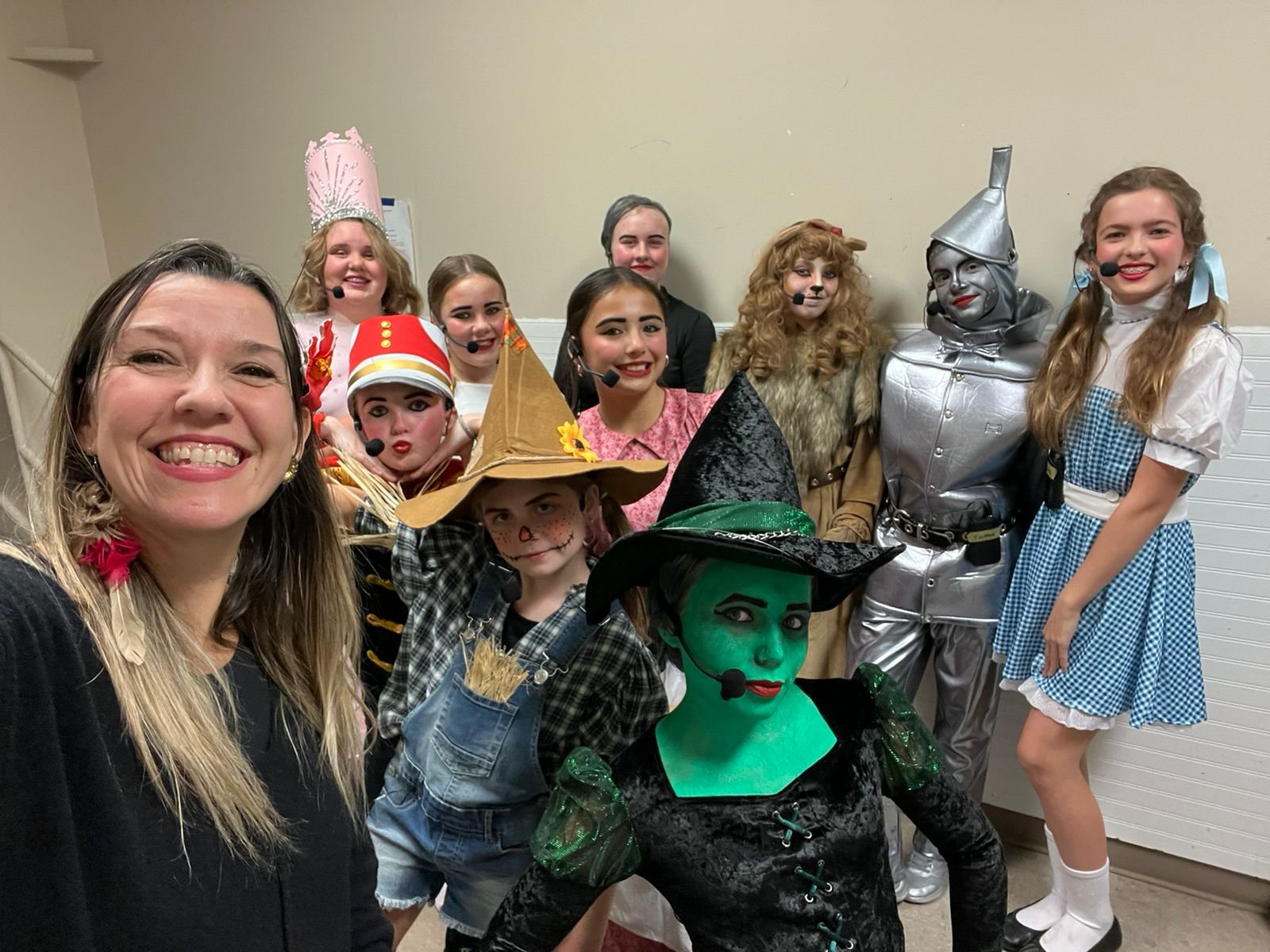Art and the kingdom
Who created art?
I always begin my lectures with this question. Perhaps you already have an answer in mind. However, the truth is that the question is not so simple to address.
Throughout my life as a professional artist and art teacher, I’ve often heard and studied the idea that art is innate to human beings. Indeed, if you observe a baby in their earliest stages, you’ll notice their adorable antics: dancing to music, clapping hands, or even humming. Hand a small child a piece of paper and a crayon, and they’ll eagerly begin creating scribbles and even naming their drawings.
One of the characters in The Door; a production by Grupo Sopro in Brazil
Let’s not forget dramatic symbolic play, where children act as mommy/daddy or teachers to their stuffed animals—an early form of theatrical creation. From this, we can conclude that art is a human activity born with us. So, does that mean we created it?
Let’s leave this question unanswered for now and dive deeper into the essence of art.
I define art as a human activity requiring a specific skill—whether innate (a gift) or developed through training (talent)—and of an aesthetic nature, as it involves the appreciation of others. Art serves to express ideas, perceptions, concepts, and emotions, aiming to lead the audience to reflection, awareness, and emotional catharsis.
There are countless artistic languages capable of fostering this exchange: dance, music, theater, visual arts, literature, cinema, photography, and more. The person who creates art—whether professionally or as a form of self-expression—is called an artist.
In my experience practicing art professionally in Brazil—a country rich in artistic and cultural expression—art has not always been well-regarded within Christian ecclesiastical environments. Some of the arguments against it are not without basis.
Art can, for example, foster vanity, as applause may inflate an artist’s sense of self-worth. Studies show that artists are sometimes elevated to near-divine status, feeding into their pride. Furthermore, art may open the door to lifestyles of libertinism, hedonism, and behaviours contrary to Christian principles.
Dani Caldeira (front left) poses with the cast of the Wizard of Oz production held in Arborg, Man.
As I delved deeper into my studies, particularly in art history, I noticed that—especially in the performing arts, where the artist becomes the work itself (such as music, dance, and theatre)—there were recurring moments of conflict with the church around the world.
Inevitably, a chasm emerged. On the one hand, the church, in general, had reservations about some artistic languages, while, on the other hand, art expanded into the outside world, touching hearts and dictating precepts.
It was in this context that I, as both an artist and a pastor, revisited the question: Who really created art?
The answer became clear: the only one capable of true creation—the Creator, whose artistry surrounds us daily. God is the source of a powerful tool that stirs emotions, fosters connection, transforms lives, teaches, encourages, and even heals.
Thus, I resolved to dedicate my gifts and talents to building and expanding God’s kingdom through art—not only within church walls but also by “going out” through art to seek and rescue lives. I achieved this by teaching music and theatre (my academic background) and presenting songs and plays that touch people’s hearts, leading them to encounter Jesus.
In Brazil, I directed a professional Christian theatre group, Grupo Sopro, which performed in the secular cultural circuit for two consecutive years. Through our work, we witnessed lives being deeply touched and transformed.
One of our plays, The Door—written by me—takes place in a medical clinic where nine people gather after receiving mysterious invitations. Believing they are in a doctor’s waiting room; they begin to reveal their innermost struggles. The titular “Door” becomes an allegory for encountering Jesus: “I am the door. Whoever enters through me will be saved” (John 10:9 EHV). One by one, their lives are transformed.
This musical weaves its narrative with songs designed to move the audience and convey its message.
Trupe Rodape
Additionally, I had the privilege of founding and directing Trupe Rodapé, the first theatre group in Brazil comprised of actors with severe cerebral palsy. Over 13 years, our productions inspired reflections on overcoming challenges, acceptance, and the value of all lives.
Together with my husband, Isabeh, we founded our School of Singing and Theatre, which has been operating since 2013, teaching arts and welcoming students from diverse social, cultural and religious backgrounds. Our school functioned as a “barn” for the kingdom, where many artists found faith and became Christians.
Here in Arborg, Man., we have begun a quiet movement in this direction. We have started a singing project in nursing homes and hospitals. I have offered music workshops for people with special needs, given guitar lessons to teenagers, and directed a theatre production with teenage girls.
This is what continues to fascinate me about art: it doesn’t require directly speaking about Jesus. Wherever a follower of Jesus creates art, there is evangelistic power because art uniquely keeps the soul alight. In times when people’s hearts grow cold, art becomes invaluable for warming them again.
I believe that here in Canada there is great potential for us to be a leading church, producing Christian artists who excel at what they do. I believe that my husband and I, both artists, were brought here to contribute to this movement.
An artist exists to serve others with their craft, a tool that touches the soul. I encourage you to put your gifts and talents to work for the kingdom and wait for the finished work that Jesus will paint.



